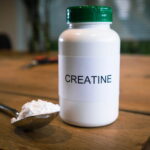Despite occasionally not wanting to go to bed, most kids (and most adults) fall asleep without much trouble. Melatonin is now a frequently advised supplement for some kids who struggle to get to sleep. Melatonin is generally effective, safe (even after prolonged use), and easily accessible (it even comes in gummies for children).
But are you wondering if melatonin is safe for children? Yes, it is effective as well as safe for kids. In this article, we will discuss in detail melatonin for kids.
What Is Melatonin?
Your body naturally produces the hormone melatonin. In general, melatonin levels in the brain fluctuate in opposition to daylight, rising when it becomes darker and falling when it gets lighter. However, it is a little more difficult. Although not all of its protective effects on the brain are fully understood, the hormone melatonin appears to have several significant protective benefits. The sleep-wake cycle becoming more regular is one of the main effects.
When Should It Be Taken?
Melatonin dosage depends on timing. It must be consumed one to four hours before the anticipated time of sleep to gently alert the brain that night has fallen. Melatonin helps regulate the “circadian clock,” but when taken out of the cycle—that is, at other times during the day or too late at night—it has little to no effect.
Is melatonin safe for children?
Parents’ apprehension is understandable in this situation. You could find conflicting information online if you browse, with some experts sounding the alarm and others claiming it is safe.
When administered correctly, melatonin generally appears to have just a few minor adverse effects in children, such as headaches, increased bedwetting, nightmares, dizziness, mood swings, and morning grogginess, all of which go away when the medication is stopped. Nevertheless, there are still issues because melatonin might impact the hormones linked to puberty, according to studies done on animals. Although there is minimal evidence to support this in humans, there haven’t yet been any lengthy clinical trials that could definitively answer the topic.
Conclusion
Melatonin should only be used under a doctor’s care, and dosage instructions should be followed. If your child has substantial trouble falling asleep and when it is taken in conjunction with behavioral therapies and healthy sleep habits, melatonin is likely to have the least risk and the most benefits. Finally, handle melatonin as you would a prescription medication and store it out of the reach of youngsters since that is not its intended use. It is best to put it in a locked cabinet or on a high shelf. Never describe any kind of medication as candy!
Read Also
- Why the Keto Diet Works for Some People—and Fails Dramatically for Others: An Ayurvedic Breakdown for Modern HealthcareThe keto diet has dominated weight-loss culture for years. For some people, it produces rapid fat loss, stable energy, and improved mental clarity. For others—especially those who gain weight easily—it leads to burnout, digestive distress, rebound weight gain, high cholesterol, and a metabolism that feels slower than before. Healthcare often frames this as a discipline… Read more: Why the Keto Diet Works for Some People—and Fails Dramatically for Others: An Ayurvedic Breakdown for Modern Healthcare
- How to Choose the Best Assisted Living Facility for SeniorsAre you looking for the right assisted living facility for a senior loved one? Choosing a place can feel overwhelming. There are many factors to consider, from care services to the environment. Safety, comfort, and social opportunities play important roles in daily life. Each senior has unique needs and preferences that must be met. Understanding… Read more: How to Choose the Best Assisted Living Facility for Seniors
- Burn Smart, Not Hard; Shape Burn: Clean Protein for Weight ManagementYou want to feel light, strong, and confident. You don’t want crash diets or fake promises. You need a plan that works with your body, not against it. That’s where Shape Burn comes in. You can burn fat without losing strength. You can eat better and stay full. You can manage weight in a way… Read more: Burn Smart, Not Hard; Shape Burn: Clean Protein for Weight Management
- Creatine Basics: How Much Is 5g, How Much Water You Need, and Whether Pills or Powder Work BetterIf you’ve ever walked into a supplement aisle or scrolled through fitness TikTok, you’ve probably seen people talking about creatine — usually with a shaker bottle in hand and promises of better workouts and faster gains. And honestly? They’re not wrong. Creatine is one of the most researched and effective supplements for muscle strength, recovery,… Read more: Creatine Basics: How Much Is 5g, How Much Water You Need, and Whether Pills or Powder Work Better
- Understanding Breast Cancer in Men: Key Facts and SymptomsBreast cancer is often thought of as a disease that only affects women. However, men can develop it too. Although it is less common, early detection and awareness are important. Read on to learn key facts, symptoms, and ways men can take action to protect their health. How Common Is Breast Cancer in Men? Breast… Read more: Understanding Breast Cancer in Men: Key Facts and Symptoms
- Raising Awareness: Breast Cancer Facts for Older MenBreast cancer does not affect only women, and many older men do not realize they are at risk. Because the signs can be easy to miss, many men learn about the disease only when it has progressed. Learning the basic facts now can help you stay aware and respond early. If you want to protect… Read more: Raising Awareness: Breast Cancer Facts for Older Men







